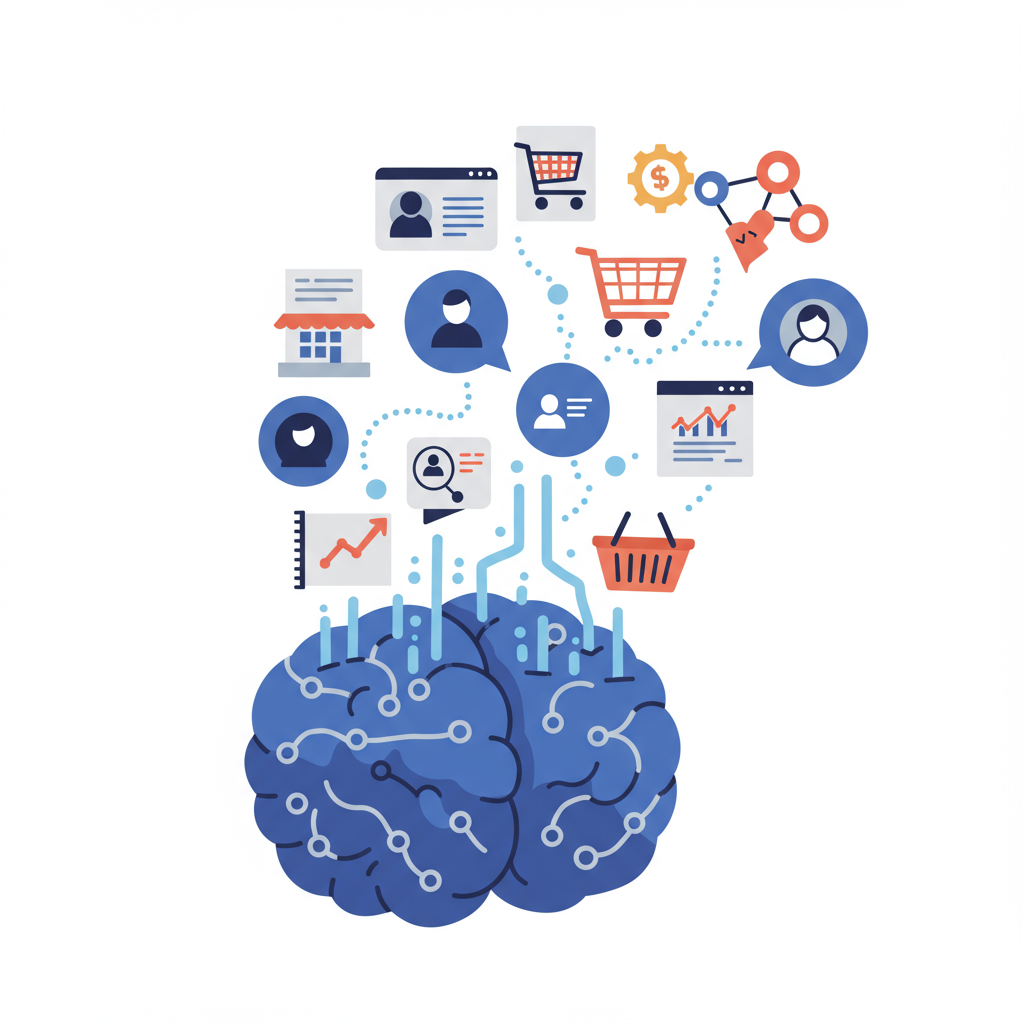Discover how Artificial Intelligence can transform your Shopify store, from optimizing inventory to personalizing customer experiences and boosting your bottom line.
As a Shopify merchant, I’m constantly looking for ways to gain an edge. The e-commerce landscape is incredibly competitive, and simply having great products isn’t enough anymore.
I’ve learned that truly thriving means making smarter, faster decisions, and for me, that journey has increasingly led to the incredible power of Artificial Intelligence (AI).
Initially, the idea of AI felt a bit intimidating, like something reserved for tech giants. But I quickly realized that AI isn’t just for Silicon Valley; it’s becoming an indispensable tool for businesses of all sizes, especially those of us on Shopify.
My goal with this article is to share my insights and demystify how AI can transform your Shopify store from a good business into a truly data-driven powerhouse.
So, what exactly do I mean by “AI insights” for Shopify? In essence, it’s about using intelligent algorithms to analyze vast amounts of data – your sales history, customer behavior, inventory levels, marketing performance – and then extracting actionable patterns and predictions.
Instead of relying on gut feelings or manual spreadsheet analysis, AI provides a clear, data-backed roadmap for your next steps. It’s like having a super-smart consultant working 24/7, sifting through everything to tell you what truly matters.
One of the first areas where I saw a significant impact was in understanding my customers. Before AI, I had a general idea of who my customers were, but it was largely anecdotal.
AI allowed me to segment my customer base with incredible precision. It identified distinct groups based on their purchasing habits, browsing behavior, and even their engagement with my marketing campaigns.
This deep segmentation meant I could stop sending generic emails and start crafting highly personalized messages and offers. For example, I could target high-value repeat customers with loyalty discounts, or re-engage lapsed customers with specific product recommendations based on their past purchases.
The result? My conversion rates on personalized campaigns skyrocketed. It felt like I was finally speaking directly to each customer, rather than shouting into the void.
Another game-changer for me was inventory management. Predicting demand has always been a headache. Too much stock means capital tied up and potential waste; too little means missed sales and frustrated customers.
AI-powered demand forecasting tools analyze historical sales data, seasonality, promotional impacts, and even external factors like holidays or trends to predict future demand with remarkable accuracy.
This allowed me to optimize my ordering, reduce carrying costs, and minimize stockouts. I could confidently order the right quantities at the right time, ensuring my shelves (virtual or physical) were always appropriately stocked.
Pricing optimization is another area where AI has proven invaluable. Manually adjusting prices based on competitor analysis or intuition is time-consuming and often suboptimal.
AI algorithms can dynamically adjust prices based on demand, competitor pricing, inventory levels, and even customer willingness to pay, maximizing both sales volume and profit margins. It’s a delicate balance, and AI helps me strike it perfectly.
My marketing efforts also became significantly more efficient. AI helps me identify which marketing channels are performing best, which ad creatives resonate most with specific audiences, and even predict the optimal time to launch campaigns.
This means I’m no longer throwing money at campaigns hoping something sticks. Instead, I’m making data-driven decisions about where to allocate my marketing budget for the highest possible return on investment.
Fraud detection, while less glamorous, is equally critical. As my store grew, so did the risk of fraudulent orders. AI systems can analyze transaction patterns in real-time, flagging suspicious activities that human eyes might miss, saving me from costly chargebacks and losses.
Even customer service has seen improvements. While I still value personal interaction, AI-powered chatbots handle common queries, freeing up my team (or myself) to focus on more complex customer issues. This improves response times and overall customer satisfaction.
Implementing AI doesn’t have to be a massive overhaul. Many Shopify apps now integrate AI capabilities directly into their features, making it accessible even for those without a technical background.
My advice for getting started? Begin with a clear problem you want to solve. Is it inventory? Customer retention? Marketing ROI? Then, explore Shopify apps or solutions that specifically address that challenge using AI.
Remember, the quality of your AI insights is directly tied to the quality of your data. Ensure your Shopify store is collecting clean, consistent data. This is the fuel for any AI engine.
Start small, experiment, and iterate. You don’t need to implement every AI feature at once. Pick one area, see the results, and then expand. The learning curve is manageable, and the benefits are truly transformative.
The future of e-commerce is undoubtedly intertwined with AI. Those of us who embrace it now will be best positioned to adapt, innovate, and thrive in an increasingly competitive digital marketplace.
It’s about working smarter, not just harder. AI empowers me to make decisions with confidence, knowing they are backed by robust data analysis.
I genuinely believe that leveraging AI insights is no longer a luxury but a necessity for any serious Shopify merchant aiming for sustainable growth.
What do you think about this article? Have you started using AI in your Shopify store, or are you considering it? I’d love to hear your thoughts and experiences.
My journey with AI on Shopify has been incredibly rewarding, leading to more efficient operations, happier customers, and ultimately, a healthier bottom line. I encourage you to explore its potential for your own business.






